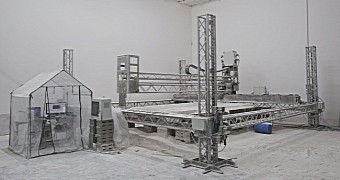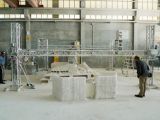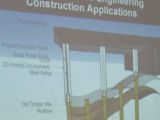With homes already possible to make via 3D printing techniques, D-Shape decided it was time to step in and make sure that the current, low-key applications in architecture actually make it beyond their current, arguably shoddy state.
Soil-based housing is all well and good, but D-Shape thinks that the world can do better than pointy, wrinkly dwellings barely good for two people.
Admittedly, the first house 3D printer was a large installation, good enough to make a genuine, standard house from concrete in 24 hours. Even with multiple stories.
D-Shape wants to advance things further though. You could say that its status as major inventor of art and methods of construction demands it.
D-Shape plans 3D printed bridges and military bunkers
D-Shape wants to use 3D printing technology to add resilience to new and old bridges by producing scientifically designed devices and attaching them to bridge piers.
The method consists of moving a 3D printer on-site, dredging the sand from the river bed, and combining it with a binding agent to use as printing material. D-Shape claims that the resulting material can be just as strong as concrete or even better.
Considering how many large structures are damaged every year by nature, especially hurricanes and earthquakes, something like this that could apply quick repairs (and even improvements) is a ticket to success for everyone involved.
D-Shape also believes that similar 3D printing technology could be used to make highway medians, curb stops, grease traps and barriers.
The military aren't being ignored either, as the company is building a bunker capable of withstanding “.50-cals and mortars” according to D-Shape Enterprises CEO James Wolff. Hospitals and bases could even be built on-site during a military mobilization.
And it’s not just portability and speed that is part of the promise here, but durability as well. Sand and a binding agent can already match concrete, but D-Shape is developing a concrete-metal mixture that will vastly exceed it. A demo will be done at some point in 2015.
The 3D printers D-Shape proposes to mobilize cost $250,000 / €203,000, pretty low compared to other industrial printers.
Practical implications
Wolff says that studies have shown that 3D printers could reduce construction costs by 75%. That's an astonishing amount, although we really should have seen it coming. After all, prosthetics went from fifty grand to fifty bucks in a day.
All that remains is to persuade construction firms and workers to adopt the new techniques. A pretty tall order, considering that the same methods have been used for decades, even centuries, and the transition promises to be fairly abrupt.

 14 DAY TRIAL //
14 DAY TRIAL // 


